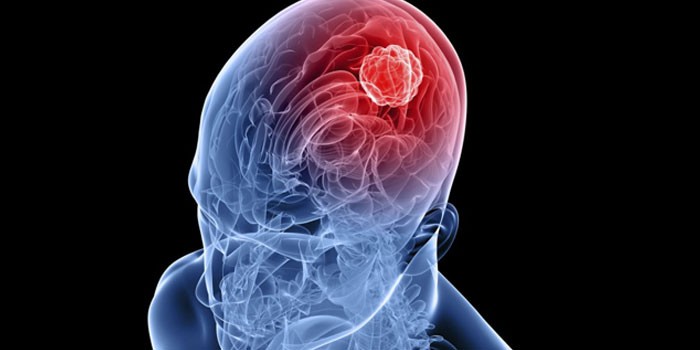Content
- Causes of a brain tumor
- Tumor classification
- Benign Brain Tumor
- Malignant brain tumor
- Brain Tumor – Symptoms
- Brain Tumor – Diagnosis
- Brain tumor removal
Intracranial neoplasms are common. Of the 1000 oncologies, 15 are with similar localization. Intracranial volume formations threaten human health and life. If treatment is not started on time, the consequence is an inevitable death.
Causes of a brain tumor
The disease is secondary or primary. If there is an oncology, the blood stream carries cancer cells throughout the body, a secondary disease begins to develop. It is not considered as independent. The causes leading to the occurrence of primary pathology are poorly understood. The only known culprit is radiation. Other risk factors do not have full scientific evidence in neurology.
Causes of a brain tumor:
- Heredity (Gorlin syndromes, Turko).
- Papillomas type 16, 18.
- Age features (in children 3-12 years old, adults over 45).
- Disorders of fetal development.
- Radiation (electromagnetic, radiation).
There are other factors that trigger the development of tumors. The primary brain tumor often appears subsequently inflammatory processes in the body, reducing immunity. The above factors, as a rule, do not lead to the occurrence of volumetric malignant formation, but can become its catalyst under certain concomitant circumstances.
Tumor classification
Neoplasms of the brain account for up to 5% of all its lesions. They are grouped according to the degree of malignancy, localization (trunk, hypothalamus, cerebellum), histological composition and other properties. Based on histology, brain tumors are divided into 4 groups. Each is assigned an ICD code. According to statistics, up to 60% of neoplasms are cancer.
Classification of brain tumors by the name of the affected tissue:
- Neuromas. Formations in the cranial and paraspinal nerves.
- Meningiomas Neoplasms in the meninges.
- Neuroepithelial formations:
- astrocytomas;
- oligodendrogliomas;
- gliomas;
- glial formations;
- gliosarcomas;
- glioblastomas;
- gangliogliomas;
- anaplastic ependymoma;
- pineoblastoma and others.
Benign Brain Tumor
Such diseases (dermoid cyst, cystic-solid neoplasms, etc.) require no less attention than cancer. A tumor in the brain can be benign or malignant, but this division is very arbitrary. The volume of the cranium is small. Cells of a benign formation, growing, squeeze nearby tissues. Because of this, intracranial pressure rises, significant nerve centers are damaged..
A benign brain tumor, like an oncological disease, is dangerous for the human body. Regardless of the variety, it is required to timely identify a head tumor, begin to treat the diseased. In this case, a positive forecast is often given. Half of all benign neoplasms are successfully treated, but if nothing is done, there is a possibility of its transformation into oncology.
Malignant brain tumor
Cancer is prone to overgrowth, rarely treatable. The forecast is always serious. There are no effective ways to prevent cancer; it is difficult to diagnose and cure. Volumetric formations are divided into 4 classes. The greatest threat is stage III and IV brain cancer. It is growing rapidly, often becoming multiform. Unlike oncology in other parts of the body, a malignant brain tumor is not prone to metastasis. The rapid spread of pathological cells in the organ itself is not excluded.

Brain Tumor – Symptoms
The disease manifests itself with a variety of symptoms. It all depends on the area of damage, the size of the neoplasm. The main symptom is pain. There are other signs of a brain tumor:
- pathology of motor activity;
- high pressure (intracranial, ocular);
- visual and hearing impairment;
- depression, euphoria;
- dizziness;
- vomiting
- decreased appetite, etc..
Brain tumor – early symptoms
Often the occurrence of pathology does not manifest itself. Often, the disease is detected by specialists accidentally (during tomographic studies, at autopsy). The first signs become noticeable when an overgrown tumor in the head begins to squeeze nearby tissues. Under the influence of the neoplasm, intracranial arterial hypertension develops (high pressure).
The symptoms of a brain tumor in the early stages are as follows:
- pain (80% of cases);
- visual impairment (70%);
- dizziness (50%);
- convulsive syndrome (30%).
Headaches with a brain tumor
Cephalgia (headache) is a common condition. The question arises, how does the head hurt with a brain tumor. You can distinguish this symptom from the manifestations of other pathologies only knowing its signs:
- constant pain is pulsating in nature;
- the intensity increases with a change in position, coughing, blowing your nose, slight stresses;
- the pain intensifies in the morning, wanes during the day;
- intensity as with migraine;
- painkillers are ineffective.
The manifestation of symptoms is amplified in the morning, because fluid accumulates in the tissues of the affected organ overnight, causing edema. Often, headache is accompanied by confusion, fainting, and other signs of a brain tumor. No need to waste time on alternative methods of treatment. If the symptoms do not disappear after three days, you should immediately consult a doctor.
Brain Tumor – Diagnosis
First, a neurological examination is performed. The doctor will check how the organs function, the activity of which depends on specific parts of the brain. During a neurological examination, studies are carried out:
- reflexes (knee, pupillary, corneal, etc.);
- hearing;
- tactile sensitivity;
- motor functions;
- coordination.
Further diagnosis of a brain tumor is carried out using:
- Different types of x-ray studies (CT, MRI, pneumography, angiography). So determine the exact location, growth direction of the neoplasm, histological composition.
- PET (positron emission tomography). The method helps to recognize the degree of development of a brain tumor.
- Neurosonography – a variety of ultrasound. It is done to the child if the baby is under the age of one.
- SPECT (single photon emission CT).
- EEG (electroencephalography).
- MEG (magnetoencephalography).
- Lumbar puncture, which is designed to study cerebrospinal fluid.
- Biopsies – obtaining a tissue sample for examination under a microscope. This analysis allows you to determine the type of tumor cells..
Brain tumor removal
The priority treatment for the disease is surgery. Due to the isolation of the brain tumor, the drugs do not reach the goal. Drug therapy is used only to temporarily relieve the patient’s well-being, along with surgical methods. Complete, partial or two-stage removal of education is possible. If it is impossible to completely eliminate the neoplasm, for example, with inoperable neoplastic cancer of the last degree, palliative operations are used to alleviate the patient’s condition, which reduce the pressure of the tumor and fluid on the brain.
Removal of neoplasms is carried out in the form of:
- stereotactic method;
- craniotomy;
- endoscopic trepanation;
- disposal of individual cranial bones.
An operation to remove a brain tumor is performed using advanced methods of surgery. Non-invasive and minimally invasive interventions are possible. This reduces the risk of complications and improves the prognosis. Radiosurgery (gamma and cyber knives) is often used to remove a brain tumor. With the help of irradiation, tumor cells are destroyed without injuring healthy tissues. After removal of education, the patient is assigned a rehabilitation course.












